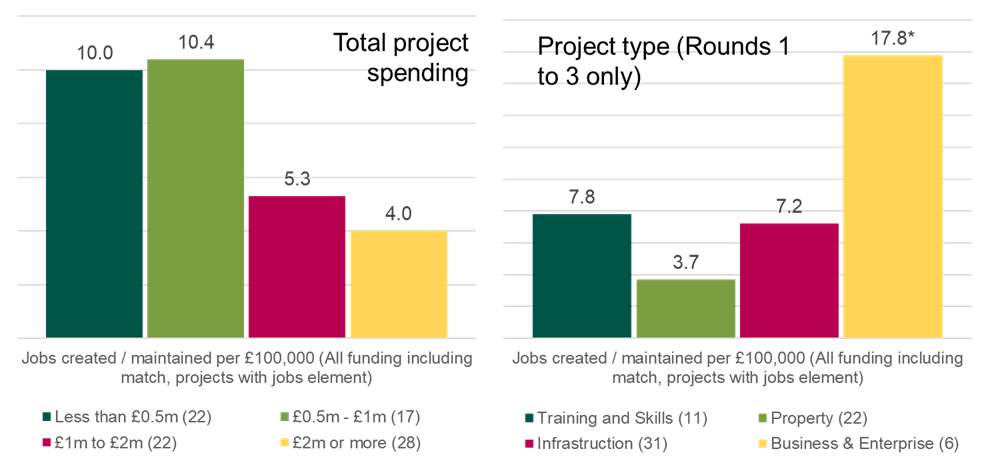
An evaluation of the Coastal Communities Fund’s work found a positive impact on English coastal communities, generating jobs and new amenities for residents and tourists. The fund was set up to finance community projects taking place along the coast, totalling £187m in funding for England between 2012 and 2019.
The evaluation involved analysis of project data, secondary data and 21 in-depth qualitative case studies with individual projects, ranging from a brand-new cycle route to encourage tourism, to renovations of historic buildings, to projects supporting new businesses with training and office space.
Jobs created or maintained per £100,000 spent: by project size and type

Source: CCF Monitoring Data, 2012 – 2019 *low base size
The projects which were most effective listened to businesses early on about what would help them grow and generate jobs – and had given extensive thought to how their project would sustain itself in the long term, rather than, for example, focusing too narrowly the immediate need to save a community asset such as a historic building in its original form.
Recommendations for change
Although the Coastal Communities Fund is no longer accepting applications for new funding, the evaluation provided recommendations for future grant schemes for community projects, including:
- Encouraging multiple projects in the same location, especially in locations in need of wider regeneration. Projects building on a recent success were more likely to succeed themselves.
- Investment in support materials for people thinking of starting a community project.
- Simplify and streamline application processes, especially for smaller projects.
- Stronger before-and-after monitoring of projects, more frequently and over a longer period, but on a smaller set of inputs and outcomes, enabling more robust assessment of economic impact without overburdening small projects.
- Making available local economic data at a town scale; mergers of local authorities into county-scale Unitary Authorities including both coastal and non-coastal areas over the last decade have made it much more challenging to look at economic performance of coastal areas, as data is typically reported only for whole Local Authority areas.
Estimating the coastal population
As part of the work, it was found that no official figures exist on the population of coastal areas in the UK. For the project, IFF estimated the size of the coastal population of England, using geographical filtering of ONS built-up area data. Excluding London, approximately 12.3m people lived in coastal settlements (located wholly or in part within 5km of the coast) in England at the time of the 2011 Census, or 23% of the total population of England. Further information about this estimate is available in Appendix A of the report.
You can find out more about the study in the published report.